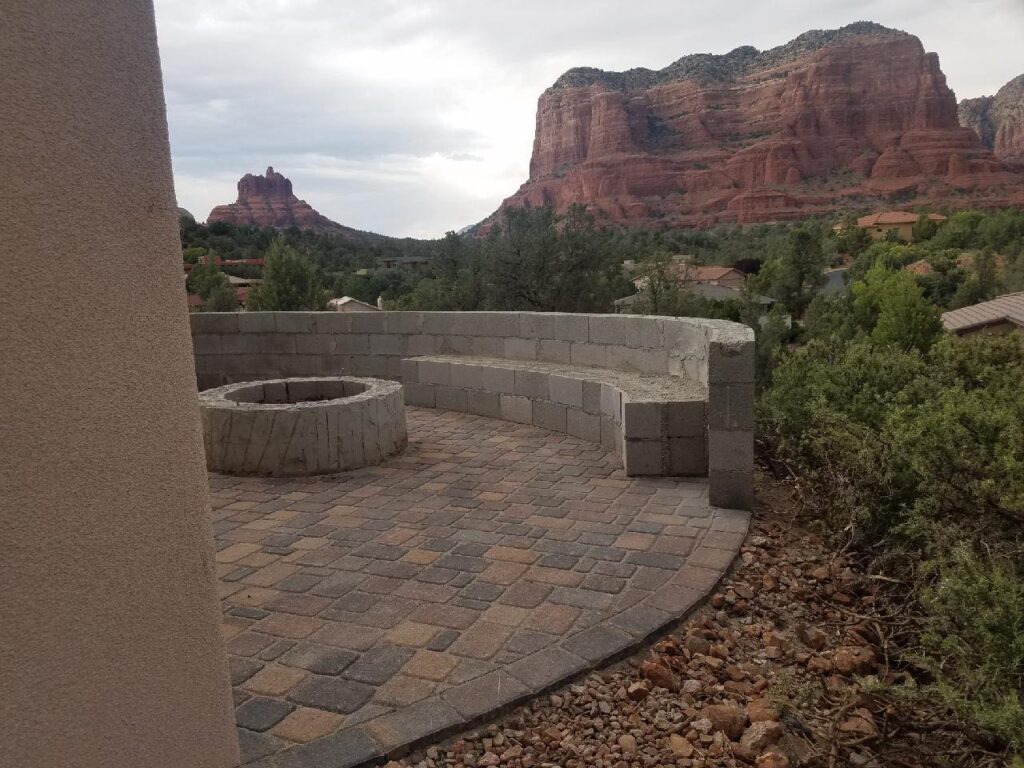
As winter blankets our landscapes in a serene layer of snow, there’s an opportunity to enhance the beauty of your outdoor space through thoughtful hardscape design. By incorporating stone and structures, you can create a winter wonderland that not only withstands the cold but also adds a touch of elegance and structure to your surroundings.
1. Stone Pathways for Winter Strolls
Nothing complements a snowy landscape quite like stone pathways. Consider installing meandering stone walkways that lead through your garden or connect key areas of your outdoor space. These paths not only add visual interest but also provide a sturdy surface for winter strolls, making it easier to navigate your yard when it’s covered in snow.
2. Snowy Sculptures and Stone Art
Take advantage of the snow’s sculptural quality by incorporating stone structures and statues into your winter landscape. These elements can stand out beautifully against the snowy backdrop, creating a captivating and artistic focal point. Whether it’s a simple stone sculpture or a more elaborate fountain, these additions add interest and charm to your winter garden.
3. Fire Pits for Warm Gatherings
Combat the winter chill by integrating a stone fire pit into your hardscape design. Surrounded by durable stone seating, a fire pit becomes a gathering point for family and friends during winter evenings. The warmth of the fire, combined with the cold crisp air, creates a unique and inviting atmosphere for outdoor gatherings.
4. Winter-Ready Stone Walls
Enhance the structure of your winter garden with stone retaining walls. These not only add an architectural element but also serve practical purposes like preventing soil erosion and creating terraced planting areas. Choose stones in earthy tones that compliment the winter landscape for a seamless blend of function and aesthetics.
5. Illuminating Stone with Winter Lighting
Highlight the beauty of your stone hardscape features by incorporating strategic lighting. During the winter months, when daylight is limited, well-placed lights can showcase the textures and details of your stone pathways, walls, and structures, adding a magical touch to your outdoor space.
In conclusion, the winter season provides a unique canvas for hardscape design. By incorporating stone pathways, structures, and thoughtful lighting, you can create a winter landscape that not only withstands the season but flourishes in its cold, quiet beauty. Embrace the serenity of winter and let your hardscape elements harmonize with the season’s natural charm. Contact us for ideas on how we can elevate your outdoor landscape space to be optimized for winter months and to enjoy all year long.
Call us at 928-636-1601











